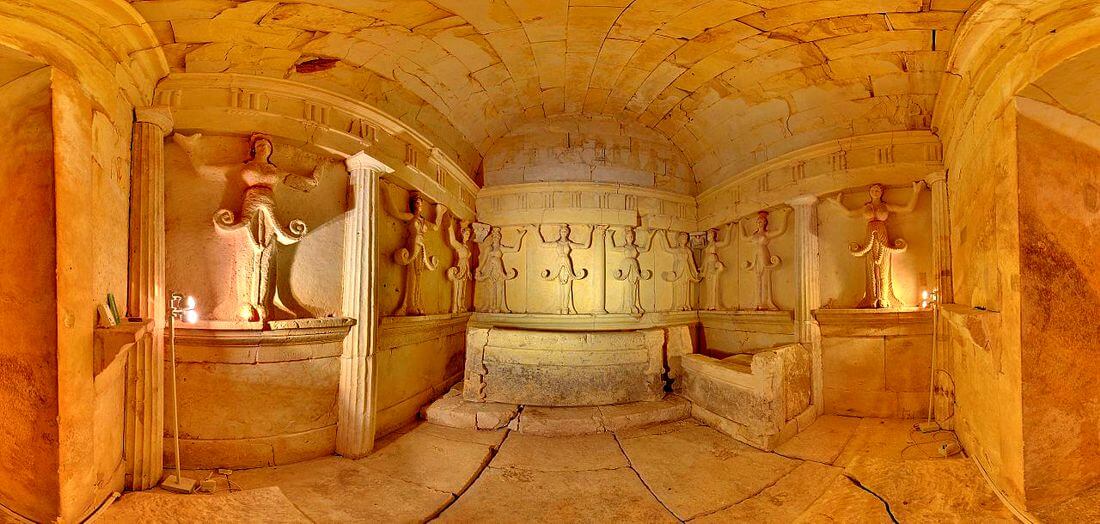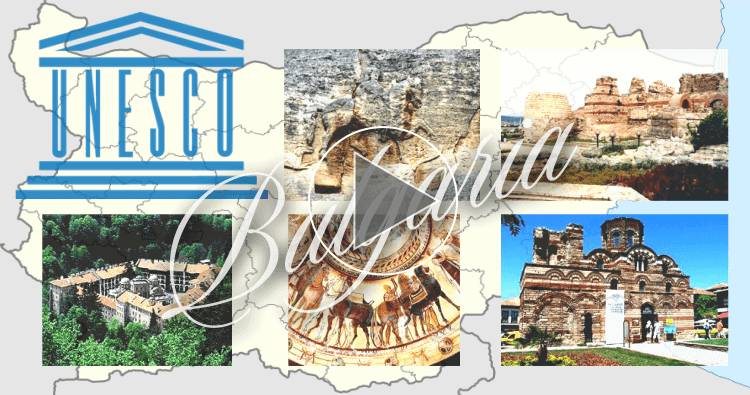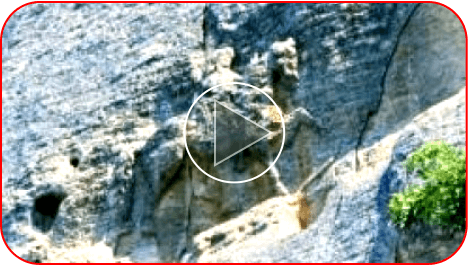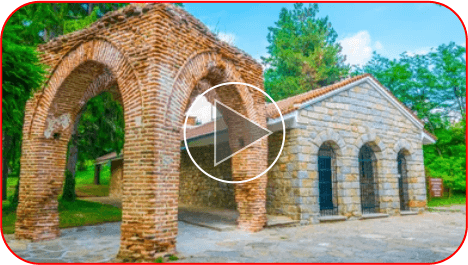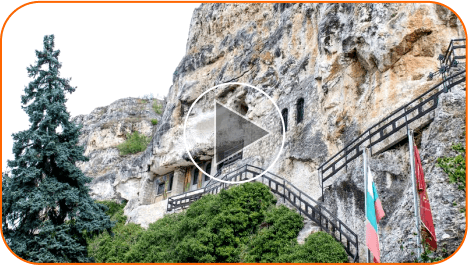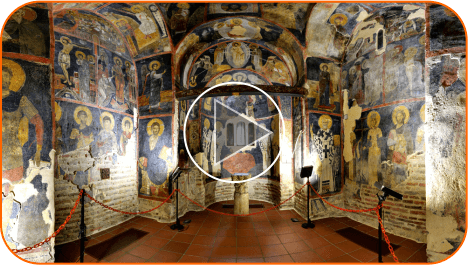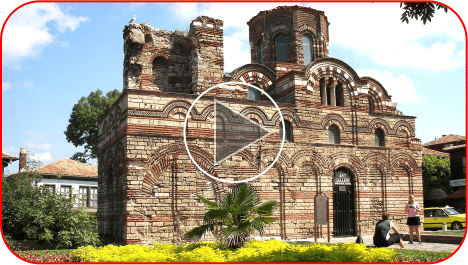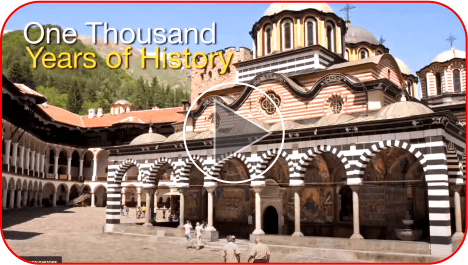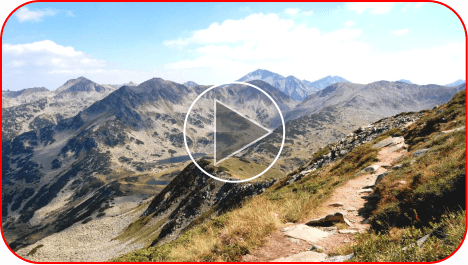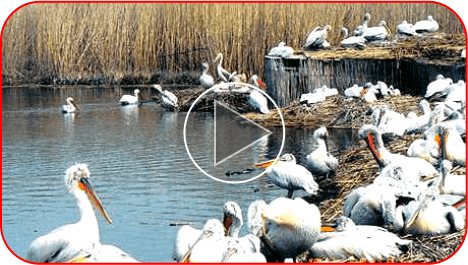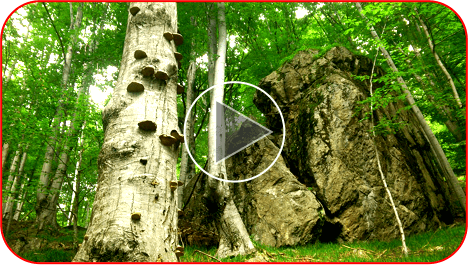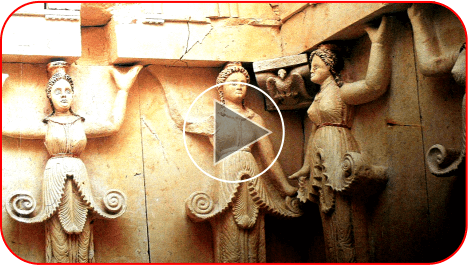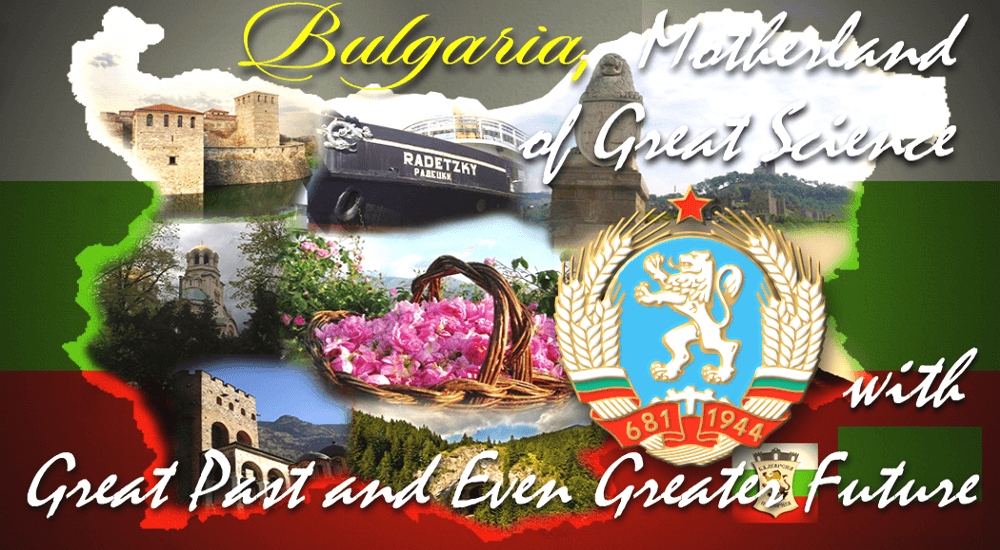
BULGARIAN HISTORICAL & CULTURAL RICHES
Bulgarian Cultural, Historical and Natural Heritage In UNESCO
What Benefits the Hidden Riches of Bulgaria Will Bring You?
GEOGRAPHIC LOCATION: Bulgaria is situated in the Southeast part of Europe, in the heart of the Balkan Peninsula. Its neighbors are Romania from the North, divided by Danube River; Macedonia and Serbia from the West; Greece and Turkey from the South; and Black sea from the East. It has very strategic location, being situated on the entrance from West and Central Europe towards Asia. It covers an area of 111,000 sq. km.
More than 300 objects of the planet are included in the list of UNESCO for world cultural and nature heritage. 10 of them are in Bulgaria, headed by Rila Monastery. But you can make your own ranking of the riches of Bulgaria, if you get good acquainted with them. To help you, we've created this page.
Bulgaria is ranked as Third Country In The World after Italy and Greece by the number of cultural and historical monuments. It has 160 monasteries, 38 cultural monuments and 330 museums!
The earliest worked up gold in the world had been founded in Bulgaria – 5,000 years BC! This is a proof that a European civilization had been existed exactly in the lands of Bulgaria, all together with Mesopotamia and Egypt! Real masterpieces are the golden treasures and wall-paintings of the Thracians, founded in shrines and temples of Thracian kings in the lands of Bulgaria.
UNESCO World Heritage Sites in Bulgaria
Bulgaria has 10 UNESCO World Heritage Sites: The early medieval large rock relief Madara Rider, 2 Thracian tombs (one in Sveshtari and one in Kazanlak), 3 monuments of medieval Bulgarian culture (the Boyana Church, the Rila Monastery and the Rock-hewn Churches of Ivanovo), 2 examples of natural beauty: the Pirin National Park and the Sreburna Nature Reserve...
Bulgarian archeology made new discoveries, worthy for UNESCO. We will show you some of them on this page.
As of 2022, there are ten World Heritage Sites listed in Bulgaria. The first four sites were listed in 1979:
1. The Madara Rider,
2. The Thracian Tomb of Kazanlak,
3. The Rock-Hewn Churches of Ivanovo and
4. The Boyana Church.
Watch all 4 videos above!
Four more sites were listed in 1983, one in 1985, and the most recent one in 2017. Seven of these sites are cultural and three are natural. There is one transnational site, the Ancient and Primeval Beech Forests of the Balkan Mountain and together with other regions of Europe, which is shared with 17 other countries. In addition, Bulgaria maintains 16 sites on the tentative (the nex) list.
1. The Madara Rider,
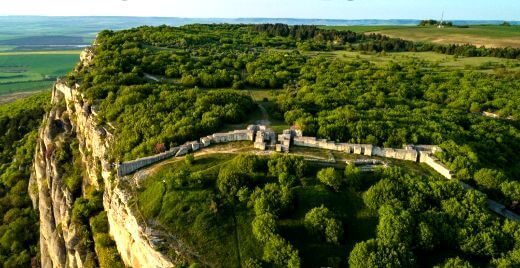 representing the figure of a knight triumphing over a lion, is carved into a 100-m-high (330 ft) cliff, at a height of 23 m (75 ft), near the village of Madara in north-east Bulgaria. Madara was the principal sacred place of the First Bulgarian Empire before Bulgaria’s conversion to Christianity in the 9th century. The inscriptions beside the sculpture tell of events that occurred between AD 705 and 801. Near the relief, there are inscriptions in Medieval Greek, describing the events of the early Bulgarian state and its khans.
representing the figure of a knight triumphing over a lion, is carved into a 100-m-high (330 ft) cliff, at a height of 23 m (75 ft), near the village of Madara in north-east Bulgaria. Madara was the principal sacred place of the First Bulgarian Empire before Bulgaria’s conversion to Christianity in the 9th century. The inscriptions beside the sculpture tell of events that occurred between AD 705 and 801. Near the relief, there are inscriptions in Medieval Greek, describing the events of the early Bulgarian state and its khans.
The Madara Rider is a unique relief, an exceptional work of art, created during the first years of the formation of the Bulgarian State, at the beginning of the 8th century. It is the only relief of its kind, having no parallel in Europe. This relief has survived in its authentic state, with no alternation from the past to the present.
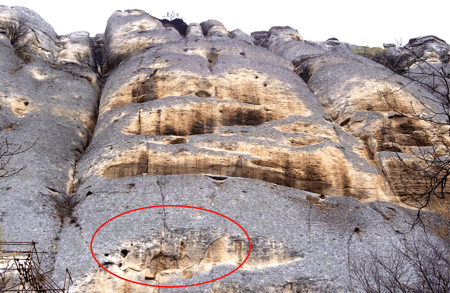 A cave monastery was built nearby from the 12th–14th century. Most importantly, Madara is the location of the famous Madara Rider, an early medieval (early 8th-century) large rock relief carved by the Bulgars and also featuring several epigraphs of historic importance written in Medieval Greek and the Trakian's “Linear B”; the relief most likely dates to the reign of Tervel of Bulgaria.
A cave monastery was built nearby from the 12th–14th century. Most importantly, Madara is the location of the famous Madara Rider, an early medieval (early 8th-century) large rock relief carved by the Bulgars and also featuring several epigraphs of historic importance written in Medieval Greek and the Trakian's “Linear B”; the relief most likely dates to the reign of Tervel of Bulgaria.
The Large Roman villa may have been at the centre of an imperial estate under the Principate. The villa was damaged in the 3rd century and was partially rebuilt in the 4th. This later phase include at least one horreum (granary) built against the north precinct wall with a wine press and dolia (storage jars), showing that it was used for wine production. The buildings were destroyed and abandoned in the late 4th or early 5th century.
It is outstanding not only as a work of Bulgarian sculpture, with its characteristically realist tendencies, but also as a piece of historical source dating from the earliest years of the establishment of the Bulgarian state. The inscriptions around the relief are, in fact, a chronicle of important events concerning the reigns of very famous Khans: Tervel, Kormisos and Omurtag.
2. The Thracian Tomb of Kazanlak
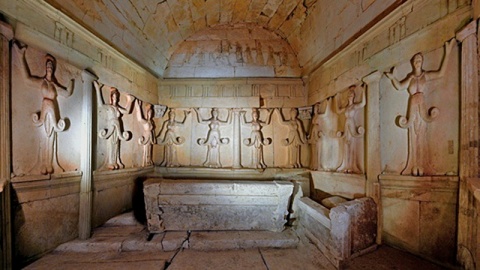 Discovered in 1944, this tomb dates from the so called Hellenistic period, around the end of the 4th century BC. It is located near Seutopolis, the capital city of the Thracian king Seutes III, and is part of a large Thracian necropolis. It is a beehive tomb (a tholos), with a narrow corridor and a round burial chamber, both decorated with murals representing Thracian burial rituals and culture.
Discovered in 1944, this tomb dates from the so called Hellenistic period, around the end of the 4th century BC. It is located near Seutopolis, the capital city of the Thracian king Seutes III, and is part of a large Thracian necropolis. It is a beehive tomb (a tholos), with a narrow corridor and a round burial chamber, both decorated with murals representing Thracian burial rituals and culture.
These paintings are Bulgaria’s best-preserved artistic masterpieces from the ancient period of Bulgaria's existence, which for propaganda reasons is wrongly called "Hellenistic period". Even in the history of Mankind from this period and before it there are no such well-preserved drawings.
The Thracian tomb of Kazanlak is a unique aesthetic and artistic work, a masterpiece of the Thracian creative spirit. This monument is the only one of its kind anywhere in the world. The exceptionally well preserved frescos and the original condition of the structure reveal the remarkable evolution and high level of culture and pictorial art in the ancient Bulgarian territory called Thrace.
3. The Rock-Hewn Churches of Ivanovo
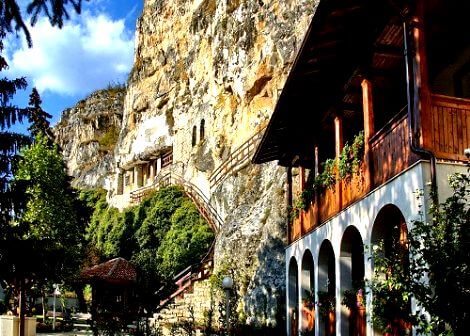 In the valley of the Roussenski Lom River, in north east Bulgaria, a complex of rock-hewn churches, chapels, monasteries and cells developed in the vicinity of the village of Ivanovo. This is where the first hermits had dug out their cells and churches during the 12th century. The 14th-century murals testify to the exceptional skill of the artists belonging to the Tarnovo School of painting. This are some of the finest examples of the Palaeologues style and represent a departure from the earlier Byzantine iconography, depicted in compositions and motives.
In the valley of the Roussenski Lom River, in north east Bulgaria, a complex of rock-hewn churches, chapels, monasteries and cells developed in the vicinity of the village of Ivanovo. This is where the first hermits had dug out their cells and churches during the 12th century. The 14th-century murals testify to the exceptional skill of the artists belonging to the Tarnovo School of painting. This are some of the finest examples of the Palaeologues style and represent a departure from the earlier Byzantine iconography, depicted in compositions and motives.
The frescos of the Ivanovo churches reveal an exceptional artistry and a remarkable artistic sensitivity for 14th century painting and Bulgarian medieval art; they are an important achievement in the Christian art of South-Eastern Europe. Posterior to the Khora monastery mosaics (Karia Djami) of 1303-1310, these frescoes, by their very expressiveness surpass any other historical monuments discovered, characteristic of the Palaeologues style. Neo-classical in spirit and in elements of their subjects, the frescoes represent a departure from the canons of Byzantine iconography. They show close ties with expressive Hellenistic art and a clear preference for the nude, the landscape, an architectural background in a composition, drama, an emotional atmosphere – qualities which combine to make an exceptional masterpiece of the Tarnovo school of painting and monumental art.
The extensive complexes of monasteries were built between the time of the Second Bulgarian State (1187-1396) and the conquest of Bulgaria by the Ottoman Empire. The five historical monuments in this group, dating from the 13th and 14th centuries, the richness, the variety of the cells, chapels, churches, monastery complexes, the original architectural solutions – all of that set in a magnificent natural environment – confirm the value of this extraordinary historical cultural monuments.
4. The Boyana Church
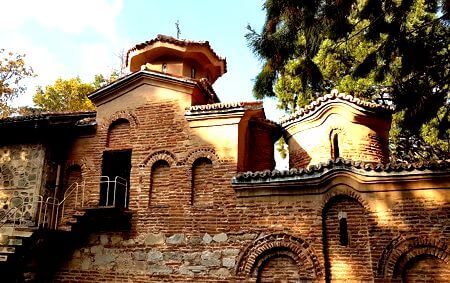 Located on the outskirts of Sofia, the Boyana Church is composed of three parts, each built at a different period which constitute a homogenous whole.
Located on the outskirts of Sofia, the Boyana Church is composed of three parts, each built at a different period which constitute a homogenous whole.
The eastern church was built in the 10th century, then enlarged at the beginning of the 13th century by Sebastocrator Kaloyan, who ordered a second two storey building to be erected next to it. The frescoes in this second church, painted in 1259, make it one of the most important collections of medieval paintings. The ensemble is completed by a third church, built at the beginning of the 19th century. This site is one of the most complete and perfectly preserved monuments of east European medieval art.
There are several layers of wall paintings in the interior from the 11th, 13th, 15-17th and 19th centuries which testify to the high level of the wall-painting during the different periods. The paintings with the most outstanding artistic value are those from 13th century. Whilst they interpret the Byzantine canon, the images have a special spiritual expressiveness and vitality and are painted in harmonious proportions.
From an architectural point of view, Boyana Church is a pure example with Orthodox Cross and ground-plan with dome vault, richly decorated facades with ceramic elements. It is one of the most remarkable medieval monuments with especially fine wall paintings.
UNESCO World Heritage Sites in Bulgaria
The next 4 sites adopted by UNESCO in 1983 are:
5. The Ancient City of Nessebar,
6. The Rila Monastery,
7. The Pirin National Park and
8. The Srebarna Nature Reserve.
Watch all 4 videos above!
5. The Ancient City of Nessebar
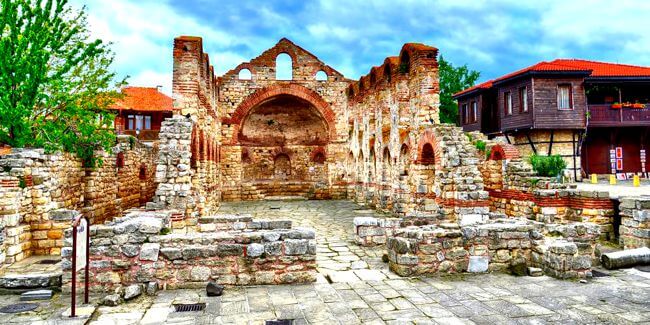 Situated on a rocky peninsula on the Black Sea, the more than 3,000-year-old site of Nessebar was originally a Thracian settlement (Menebria). At the beginning of the 6th century BC, the city became a Greek colony. The city’s remains, which date mostly from the Hellenistic period, include the acropolis, a temple of Apollo, an agora and a wall from the Thracian fortifications. Among other monuments, the Stara Mitropolia Basilica and the fortress date from the Middle Ages, when this was one of the most important Byzantine towns on the west coast of the Black Sea. Wooden houses built in the 19th century are typical of the Black Sea architecture of the period.
Situated on a rocky peninsula on the Black Sea, the more than 3,000-year-old site of Nessebar was originally a Thracian settlement (Menebria). At the beginning of the 6th century BC, the city became a Greek colony. The city’s remains, which date mostly from the Hellenistic period, include the acropolis, a temple of Apollo, an agora and a wall from the Thracian fortifications. Among other monuments, the Stara Mitropolia Basilica and the fortress date from the Middle Ages, when this was one of the most important Byzantine towns on the west coast of the Black Sea. Wooden houses built in the 19th century are typical of the Black Sea architecture of the period.
The Ancient city of Nessebar is a unique example of a synthesis of the centuries-old human activities in the sphere of culture; it is a location where numerous civilizations have left tangible traces in single homogeneous whole, which harmoniously fit in with nature. The different stages of development of its wooden houses reflect the stages of development of the architectural style on the Balkans and in the entire East Mediterranean region. The urban structure contains elements from the second millennium BC, from Ancient Times and the Medieval period.
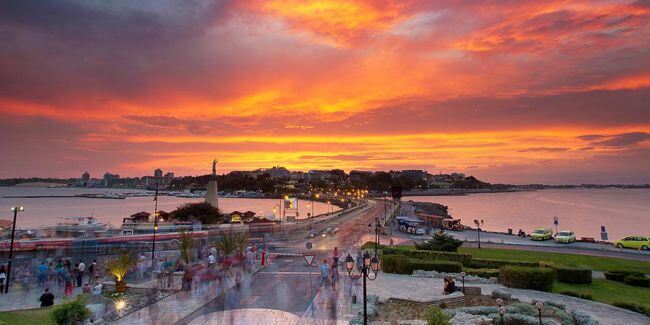 The medieval religious architecture, modified by the imposition of the traditional Byzantine forms, illustrates ornamental ceramics art, the characteristic painted decoration for this age. The town has served for over thousands of years as remarkable spiritual hearth of Christian culture.
The medieval religious architecture, modified by the imposition of the traditional Byzantine forms, illustrates ornamental ceramics art, the characteristic painted decoration for this age. The town has served for over thousands of years as remarkable spiritual hearth of Christian culture.
The Ancient City of Nessebar is an outstanding testimony of multilayered cultural and historical heritage. It is a place where many civilizations left their tangible traces: archaeological structures from the Second millennium BC, a Greek Black Sea colony with surviving remains of fortifications, a Hellenistic villa and religious buildings from the Antiquity, seven preserved churches from the Middle Ages. Nessebar has demonstrated its historical importance as a frontier city on numerous occasions. Having been a remarkable spiritual centre of Christianity for a thousand years, today it is a developing and vibrant urban organism.
The Ancient City of Nessebar is a unique example of an architectural ensemble with preserved Bulgarian Renaissance structure, and forms a harmonious homogenous entity with the outstanding natural configuration of the rocky peninsular, linked with the continent by a long narrow stretch of land. Its nature and existence is a result of synthesis of long-term human activity, which has witnessed significant historic periods - an urban structure with elements from 2nd millennium BC, classical antiquity, and the Middle Ages; the development of medieval religious architecture with rich plastic and polychrome decoration on its facades in the form of ceramic ornamentation typical for the period; the different stages in the development of the characteristic wooden houses, which testify to the supreme mastery of the architecture of the Balkans as well as the East Mediterranean region. The vernacular architecture of the urban ensemble, dominated by medieval churches and archaeology, together with the unique coastal relief, combine to produce an urban fabric of the high quality.
6. The Rila Monastery
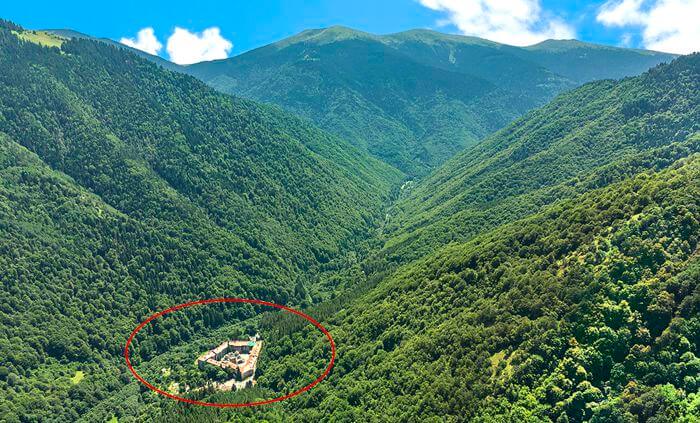 Rila Monastery was founded in the 10th century by St. John of Rila, a hermit canonized by the Orthodox Church. His ascetic dwelling and tomb became a holy site and were transformed into a monastic complex which played an important role in the spiritual and social life of medieval Bulgaria. Destroyed by fire at the beginning of the 19th century, the complex was rebuilt between 1834 and 1862. A characteristic example of the Bulgarian Renaissance (18th–19th centuries), the monument symbolizes the awareness of a Slavic cultural identity following centuries of occupation.
Rila Monastery was founded in the 10th century by St. John of Rila, a hermit canonized by the Orthodox Church. His ascetic dwelling and tomb became a holy site and were transformed into a monastic complex which played an important role in the spiritual and social life of medieval Bulgaria. Destroyed by fire at the beginning of the 19th century, the complex was rebuilt between 1834 and 1862. A characteristic example of the Bulgarian Renaissance (18th–19th centuries), the monument symbolizes the awareness of a Slavic cultural identity following centuries of occupation.
In its complicated ten-century history the Rila monastery has been the hub of a strong spiritual and artistic influence over the Eastern Orthodox world during medieval times (11th-14th c.). Under Ottoman rule (1400-1878) the monastery influenced the development of the culture and the arts of all Christian nations within the Ottoman Empire. With its architecture, frescos etc. it represents a masterpiece of the creative genius of the Bulgarian people.
Architectural styles have been preserved on the property as historical monuments of considerable time span (11th-19th c.). The basic architectural appearance is now one of the peak examples of building craftsmanship of the Balkan peoples from the early 19th c. As such it has exerted considerable influence on architecture and aesthetics within the Balkan area.
Rila Monastery is considered a symbol of the 19th Century Bulgarian Renaissance which imparted Slavic values upon Rila in trying to reestablish an uninterrupted historic continuity.
Rila Monastery is the most important spiritual and literary center of the Bulgarian national revival, with an uninterrupted history from the Middle Ages until present times. Reconstruction work was required following a fire, and sections of the monastery, a new church and other structures date to the 18th century. The property fully endorses authenticity requirements regarding location, context, concept, usage, function and tradition, where the spirit and feeling of the site are also properly preserved.
7. The Pirin National Park
 Spread over an area of over 27,000 ha, at an altitude between 1008 and 2914 m in the Pirin Mountains, southwest Bulgaria, the site comprises diverse limestone mountain landscapes with glacial lakes, waterfalls, caves and predominantly coniferous forests. It was added to the World Heritage List in 1983. The extension now covers an area of around 40,000 ha in the Pirin Mountains, and overlaps with the Pirin National Park, except for two areas developed for tourism (skiing). The dominant part of the extension is high mountain territory over 2000m in altitude, and covered mostly by alpine meadows, rocky screes and summits. Other VIDEO.
Spread over an area of over 27,000 ha, at an altitude between 1008 and 2914 m in the Pirin Mountains, southwest Bulgaria, the site comprises diverse limestone mountain landscapes with glacial lakes, waterfalls, caves and predominantly coniferous forests. It was added to the World Heritage List in 1983. The extension now covers an area of around 40,000 ha in the Pirin Mountains, and overlaps with the Pirin National Park, except for two areas developed for tourism (skiing). The dominant part of the extension is high mountain territory over 2000m in altitude, and covered mostly by alpine meadows, rocky screes and summits. Other VIDEO.
The mountain scenery of Pirin National Park is of exceptional beauty. The high mountain peaks and crags contrast with meadows, rivers and waterfalls and provide the opportunity to experience the aesthetics of a Balkan mountain landscape. The ability to experience remoteness and naturalness is an important attribute of the Outstanding Universal Value of the property.
The principal earth science values of the property relate to its glacial geomorphology, demonstrated through a range of features including cirques, deep valleys and over 70 glacial lakes. The mountains of the property show a variety of forms and have been developed in several different rock types. Functioning natural processes allow for study of the continued evolution of the landforms of the property, and help to understand other upland areas in the region.
The property is a good example of the continuing evolution of flora, as evidenced by a number of endemic and relict species, and the property also protects an example of a functioning ecosystem that is representative of the important natural ecosystems of the Balkan uplands. Pirin’s natural coniferous forests include Macedonian Pine and Bosnian Pine, with many old growth trees. In total, there are 1,315 species of vascular plants, about one third of Bulgaria’s flora, including 86 Balkan endemics, 17 Bulgarian endemics and 18 local endemics. The fauna of Pirin National Park includes 45 mammal species, including brown bear, wolf and pine marten, and 159 bird species. Pirin is also home to eight species of amphibians, eleven species of reptiles and six fish species. Although the forests are affected by some historical use, the natural functioning of the ecosystem ensures the protection of its regionally significant biodiversity values.
8. The Srebarna Nature Reserve
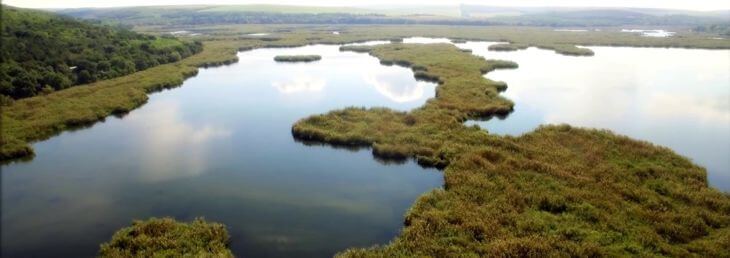 The Srebarna Nature Reserve is a freshwater lake adjacent to the Danube and extending over 600 ha. It is the breeding ground of almost 100 species of birds, many of which are rare or endangered. Some 80 other bird species migrate and seek refuge there every winter. Among the most interesting bird species are the Dalmatian pelican, great egret, night heron, purple heron, glossy ibis and white spoonbill.
The Srebarna Nature Reserve is a freshwater lake adjacent to the Danube and extending over 600 ha. It is the breeding ground of almost 100 species of birds, many of which are rare or endangered. Some 80 other bird species migrate and seek refuge there every winter. Among the most interesting bird species are the Dalmatian pelican, great egret, night heron, purple heron, glossy ibis and white spoonbill.
Srebarna Nature Reserve protects a lake and wetland ecosystem of 638ha located near to the village of Srebarna on the west bank of the Danube River. The reserve includes the lake and the former agricultural lands north of the lake, a belt of forest plantations along the Danube, the island of Komluka and the aquatic area locked between the island and the riverbank.
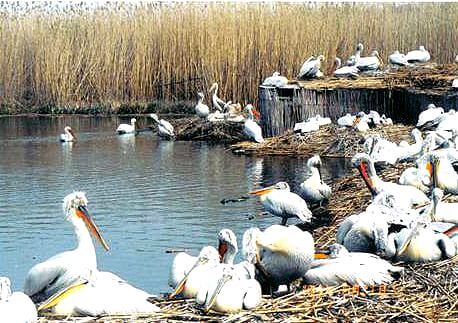 Srebarna Nature Reserve is an important wetland on the Western Palaearctic bird migratory flyway. It provides nesting grounds for 99 species of birds and seasonal habitat to around 80 species of migratory birds. The property is surrounded by hills which provide a natural boundary and offer an ideal means for observing the waterfowl.
Srebarna Nature Reserve is an important wetland on the Western Palaearctic bird migratory flyway. It provides nesting grounds for 99 species of birds and seasonal habitat to around 80 species of migratory birds. The property is surrounded by hills which provide a natural boundary and offer an ideal means for observing the waterfowl.
Srebarna Nature Reserve protects an important example of a type of wetland that was widespread in Bulgaria in the past. It shelters a diversity of plant and animal species, which are increasingly threatened. The wetland is an important breeding, staging and wintering site for a large number of birds. Floating reedbed islands and flooded willow woodlands provide important bird breeding areas. In the lake's northern end the reedbeds gradually give way to wet meadows. In the north-western end of the lake and along the Danube there are belts of riverine forest with single old trees of White Willow.
The rich bird life supported by Srebarna Nature Reserve is the basis for its international significance. The property holds populations of birds that are considered critical to species survival. It hosts the only colony of Dalmatian Pelican in Bulgaria, as well as the largest breeding populations of four more globally threatened species: Pygmy Cormorant, Ferruginous Duck, White-tailed Eagle and Corncrake. Srebarna is also of European value importance in supporting Little Bittern Night Heron, Squacco Heron, Little Egret, Great White Egret, Purple Heron, Glossy lbis, Spoonbill and Ruddy Shelduck. Three species of terns also occur here. Globally threatened Pygmy Cormorant and Red-breasted Goose winter in the Reserve, and the wintering populations of White-fronted Goose, Greylag Goose and Fieldfare are also notable.
In total the property provides critical habitat that supports 173 bird species, 78 species of which are of European conservation concern, and nine being listed as globally threatened.

UNESCO World Heritage Sites in Bulgaria
The next 2 sites adopted by UNESCO in 1985 and 2017 are:
9. The Ancient and Primeval Beech Forests of the Balkan Mountain,
10. The Thracian Tomb of Sveshtari.
Watch the 2 videos above!
9. The Ancient and Primeval Beech Forests of the Balkan Mountain
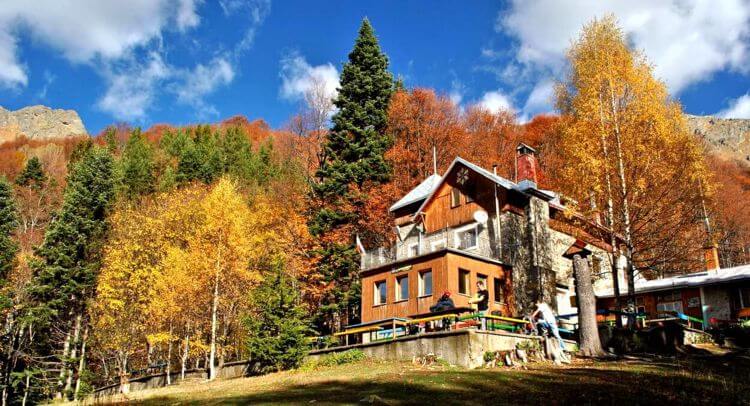 Stara Planina (Balkan Mountain) is a symbol of the Bulgarian state and all countries of the Balkan Peninsula. The name "Balkan Peninsula" actually comes from the name of this mountain. This is not accidental. The livelihood of the population here from ancient times produces some of the strongest physical and spiritual personalities of Bulgaria. And the credit for this goes to biodiversity, valuable forests, herbs and animals. The energy with which it charges the mountain is amazing and you can feel it if you live at least a week in my city – Karlovo City.
Stara Planina (Balkan Mountain) is a symbol of the Bulgarian state and all countries of the Balkan Peninsula. The name "Balkan Peninsula" actually comes from the name of this mountain. This is not accidental. The livelihood of the population here from ancient times produces some of the strongest physical and spiritual personalities of Bulgaria. And the credit for this goes to biodiversity, valuable forests, herbs and animals. The energy with which it charges the mountain is amazing and you can feel it if you live at least a week in my city – Karlovo City.
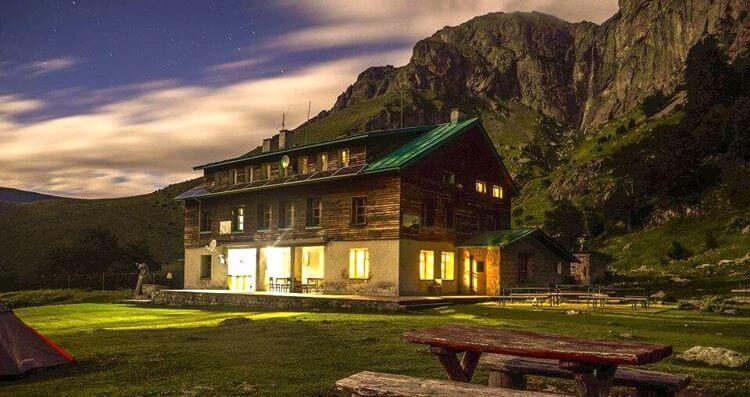 The national park here is located in the highest and alpine mountain range in the geographical center of Bulgaria, the altitude here is between 550 m. in the valley of Karlovo up to 2,376 m. on the highest peak of the Balkan Mountain – Botev peak. The park began its official existence on October 31, 1991. This national park, the third largest protected area in Bulgaria, has an area of 716.69 km² with a total length from east to west 85 km and an average width of 12 km. The park covers the territory of 5 of all 28 districts of the country: Sofia, Gabrovo, Lovech, Stara Zagora and Plovdiv. The national park includes nine nature reserves, which are 28% of its entire territory: Tsarichina, Boatin, Steneto, Goat's Wall, Singing Rocks, Djendema and North Jendem, Stara Reka and Sokolna.
The national park here is located in the highest and alpine mountain range in the geographical center of Bulgaria, the altitude here is between 550 m. in the valley of Karlovo up to 2,376 m. on the highest peak of the Balkan Mountain – Botev peak. The park began its official existence on October 31, 1991. This national park, the third largest protected area in Bulgaria, has an area of 716.69 km² with a total length from east to west 85 km and an average width of 12 km. The park covers the territory of 5 of all 28 districts of the country: Sofia, Gabrovo, Lovech, Stara Zagora and Plovdiv. The national park includes nine nature reserves, which are 28% of its entire territory: Tsarichina, Boatin, Steneto, Goat's Wall, Singing Rocks, Djendema and North Jendem, Stara Reka and Sokolna.
The Central Balkan National Park is one of the largest and most valuable protected areas in Europe. The International Union for Conservation of Nature (IUCN) designates the park in category 2. The nine nature reserves of the park are in the UN ranking of the most representative protected areas, and four of the nature reserves are included in the global network of biosphere reserves under the program “Man and biosphere” of UNESCO. He is a full member of the WWF PAN Parks. Since 2017, the centuries-old beech forests in all nine park reserves are included in the World Heritage of Primitive Beech Forests.
The park falls within the European special ecological area of the Rhodope mountain mixed forests, as well as the Palearctic temperate deciduous and mixed forests. It is home to rare herbs and endangered species, it is home to herds of wild animals, self-regulating ecosystems, ones of the richest on biodiversity and species, as well as historical sites of global scientific, cultural and ethnographic importance. The flora is represented by 2340 species and subspecies of plants. Forests occupy 56% of the total area. Here live 2387 species of invertebrates, 14 species of reptiles, 59 species of mammals, 8 species of amphibians, 224 species of birds and 6 species of fish.
See more about Central Balkan National Park:
10. The Thracian Tomb of Sveshtari
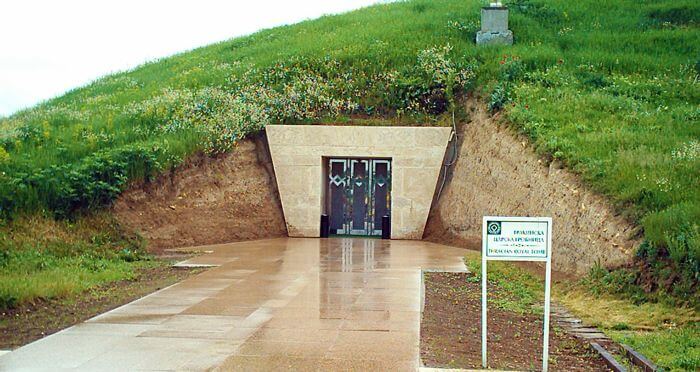 The Thracian tomb near the village of Sveshtari is 23 centuries old. It has existed almost intact since the 3rd century BC. and was discovered in 1982 by chance during agricultural plowing. The interior decoration and coloring are extremely well preserved and are a unique example of Bulgarian architecture, which for political reasons is called "Thracian". In fact, Thrace is only one area of the vast Bulgarian state, so political speculators have coined this artificial name "Thracians" to blur the truth about the greatness of the most ancient state in the world. Here is presented the local art of the Getae, another tribe of Bulgarians (Thracians). Again, historical speculators describe it as Hellenistic, which is not true. A distinctive feature of the tomb are 10 caryatids, which are half female and half plants...
The Thracian tomb near the village of Sveshtari is 23 centuries old. It has existed almost intact since the 3rd century BC. and was discovered in 1982 by chance during agricultural plowing. The interior decoration and coloring are extremely well preserved and are a unique example of Bulgarian architecture, which for political reasons is called "Thracian". In fact, Thrace is only one area of the vast Bulgarian state, so political speculators have coined this artificial name "Thracians" to blur the truth about the greatness of the most ancient state in the world. Here is presented the local art of the Getae, another tribe of Bulgarians (Thracians). Again, historical speculators describe it as Hellenistic, which is not true. A distinctive feature of the tomb are 10 caryatids, which are half female and half plants...
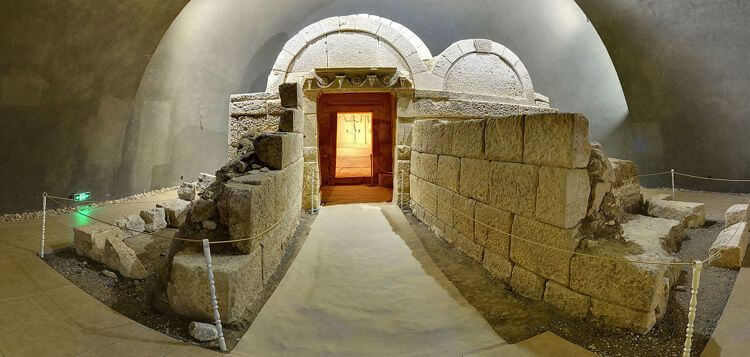 This tomb is located in northeastern Bulgaria and is 2.5 km southwest of the village of Sveshtari, Razgrad region and is 42 km northeast of this regional city. It is believed that this is the tomb of Dromichet (according to ancient Greek documents) and dates between 300 or 280 BC. Scholars suggest that Dromichet was king of the Getae (Trakians or Bulgarians) on both sides of the lower Danube (in today's Bulgaria and Romania). At the same time lived the daughter of King Lysimachus, who was a general and dyad (i.e. “heir”) of Alexander the Great. It is the latter fact that gives reason for the tomb to become a UNESCO World Heritage Site.
This tomb is located in northeastern Bulgaria and is 2.5 km southwest of the village of Sveshtari, Razgrad region and is 42 km northeast of this regional city. It is believed that this is the tomb of Dromichet (according to ancient Greek documents) and dates between 300 or 280 BC. Scholars suggest that Dromichet was king of the Getae (Trakians or Bulgarians) on both sides of the lower Danube (in today's Bulgaria and Romania). At the same time lived the daughter of King Lysimachus, who was a general and dyad (i.e. “heir”) of Alexander the Great. It is the latter fact that gives reason for the tomb to become a UNESCO World Heritage Site.
The excavations began when a road to the mound was accidentally found during agricultural plowing. It is not logical for the road to be buried with hill. Therefore, people assumed that there was something valuable under the mound. Otherwise, the road from afar would have bypassed the mound. Excavations began in 1982 on Mound 7 of the Eastern mound necropolis of the village of Sboryanovo (Ginina mound) – a mound from the ancient Bulgarian (called “Thracian”) period, and speculators-historians call it “Hellenistic” period.
The tomb near the village of Sveshtari was built in the first quarter of the 3rd century BC. The construction follows the basic principles of the Bulgarian (Thracian) cult constructions. The interior architecture is unique in the world – with polychrome semi-human, semi-plant caryatids and painted murals. The ten female figures carved in high relief on the walls of the central chamber and the decoration of the lunette in its vault are the only examples of this type found so far in the lands of the ancient Bulgarian (Thracian, Gethic) people. Speculative historians lie that this people received its culture from the Greeks, but the opposite is true – the Greeks received the culture and crafts from the Bulgarians (Thracians), because they are older and much more developed economically and technologically.
In 2012, archaeologists discovered a significant treasure near the village that named the tomb. The treasure contains 44 images of female figures, a gold ring, and 100 gold buttons. It is believed that this tomb and the nearby mounds are part of the capital of the Hittites (another great nation from Thracians) – Helis.
Find out more about the next candidates for UNESCO SITES:
